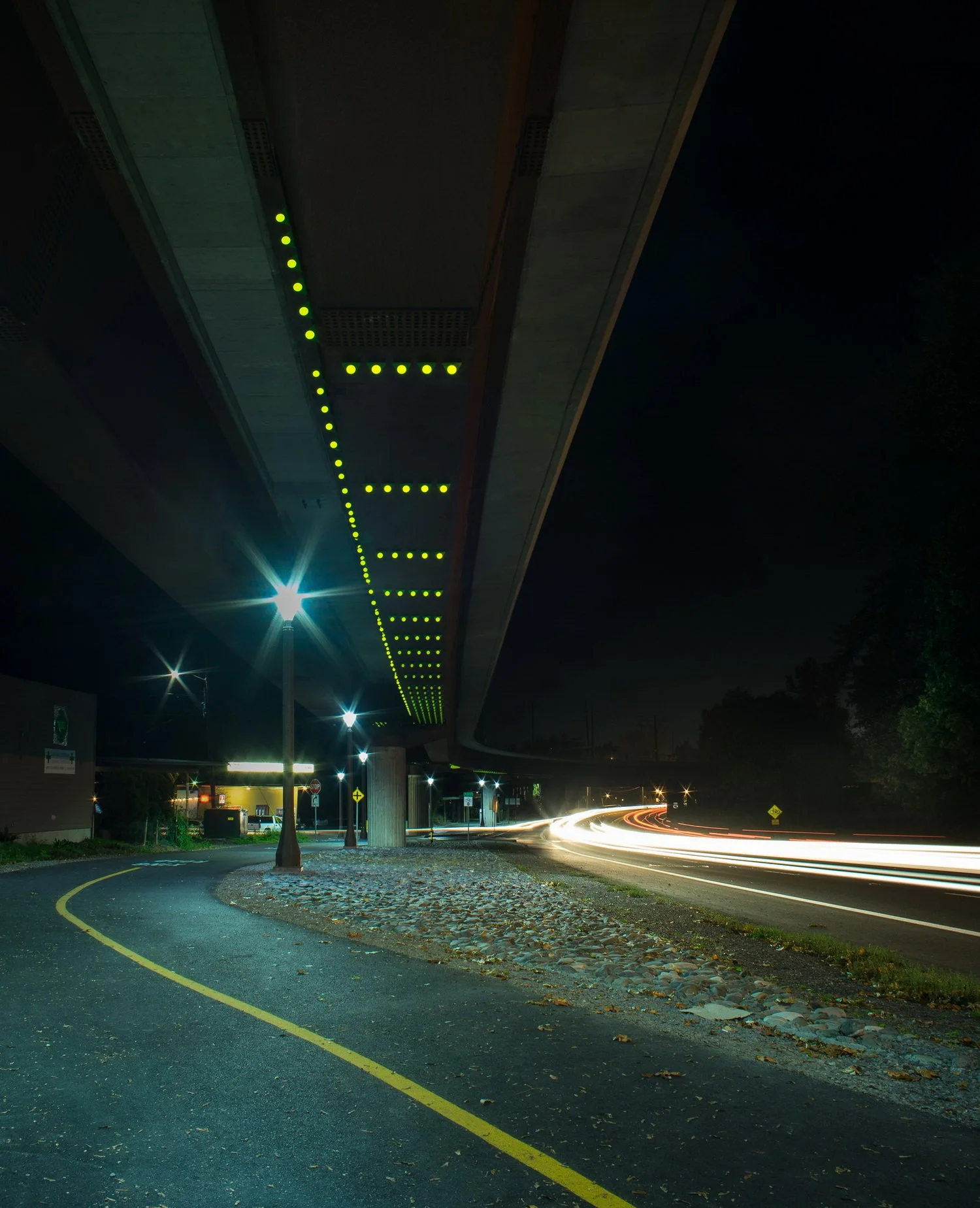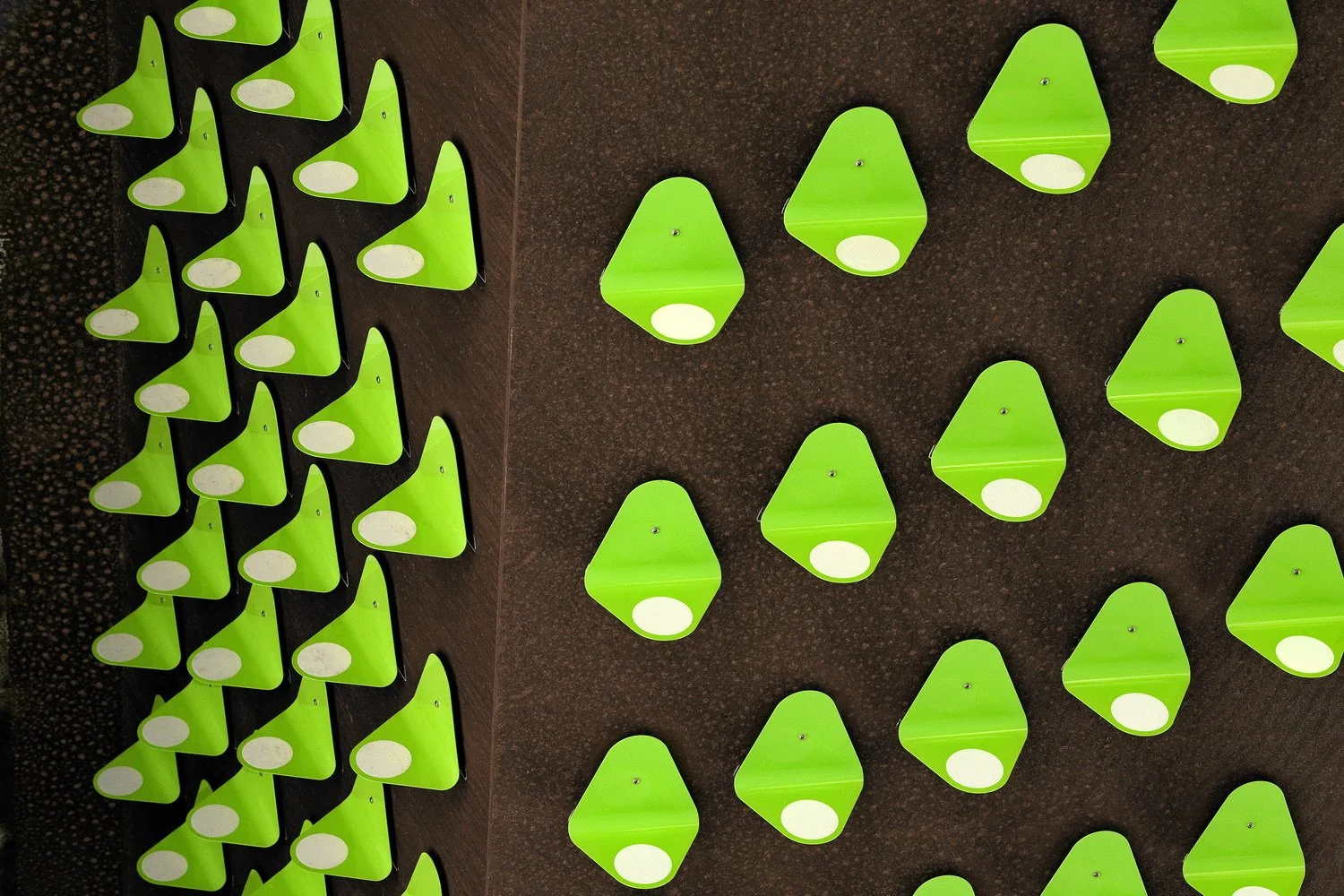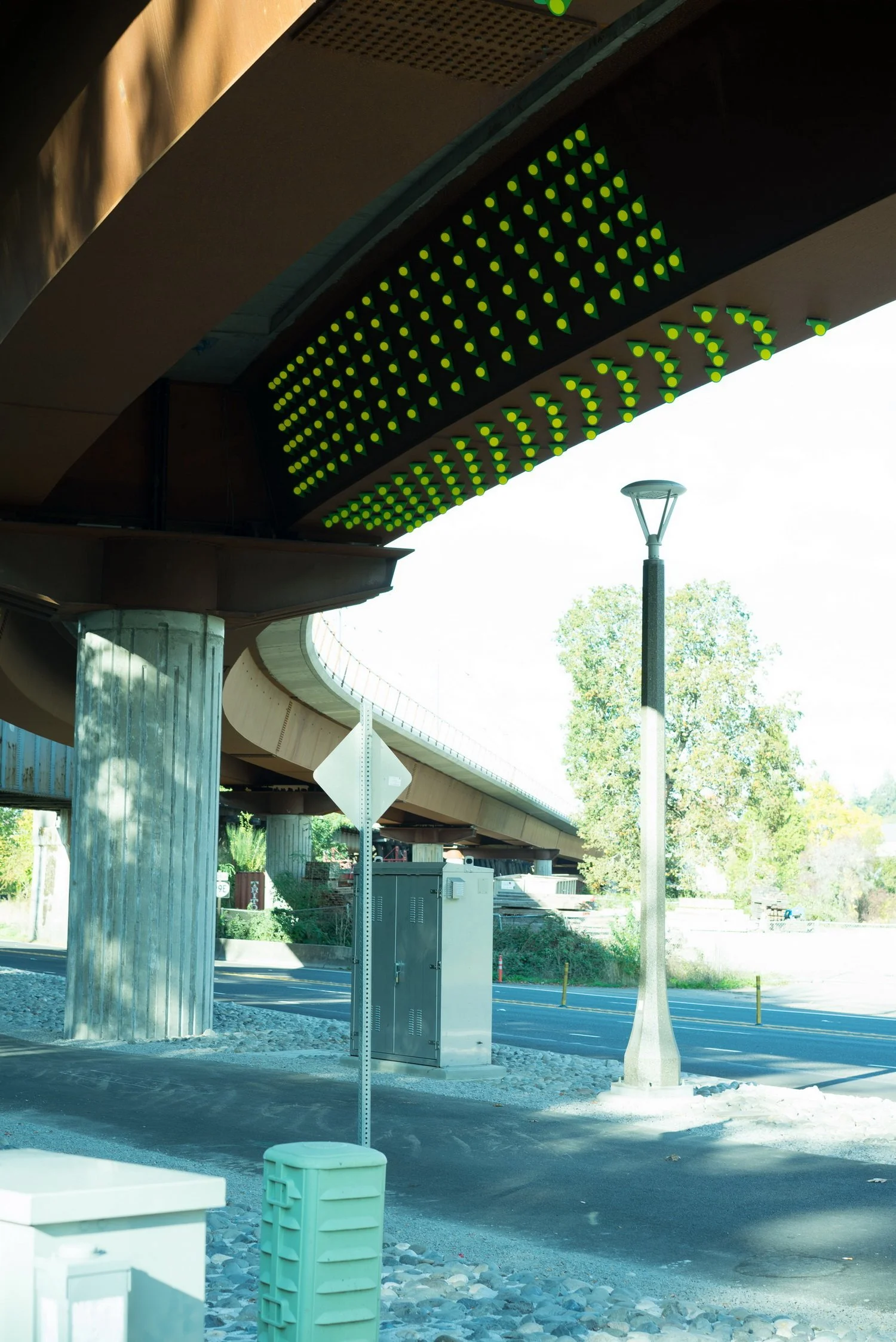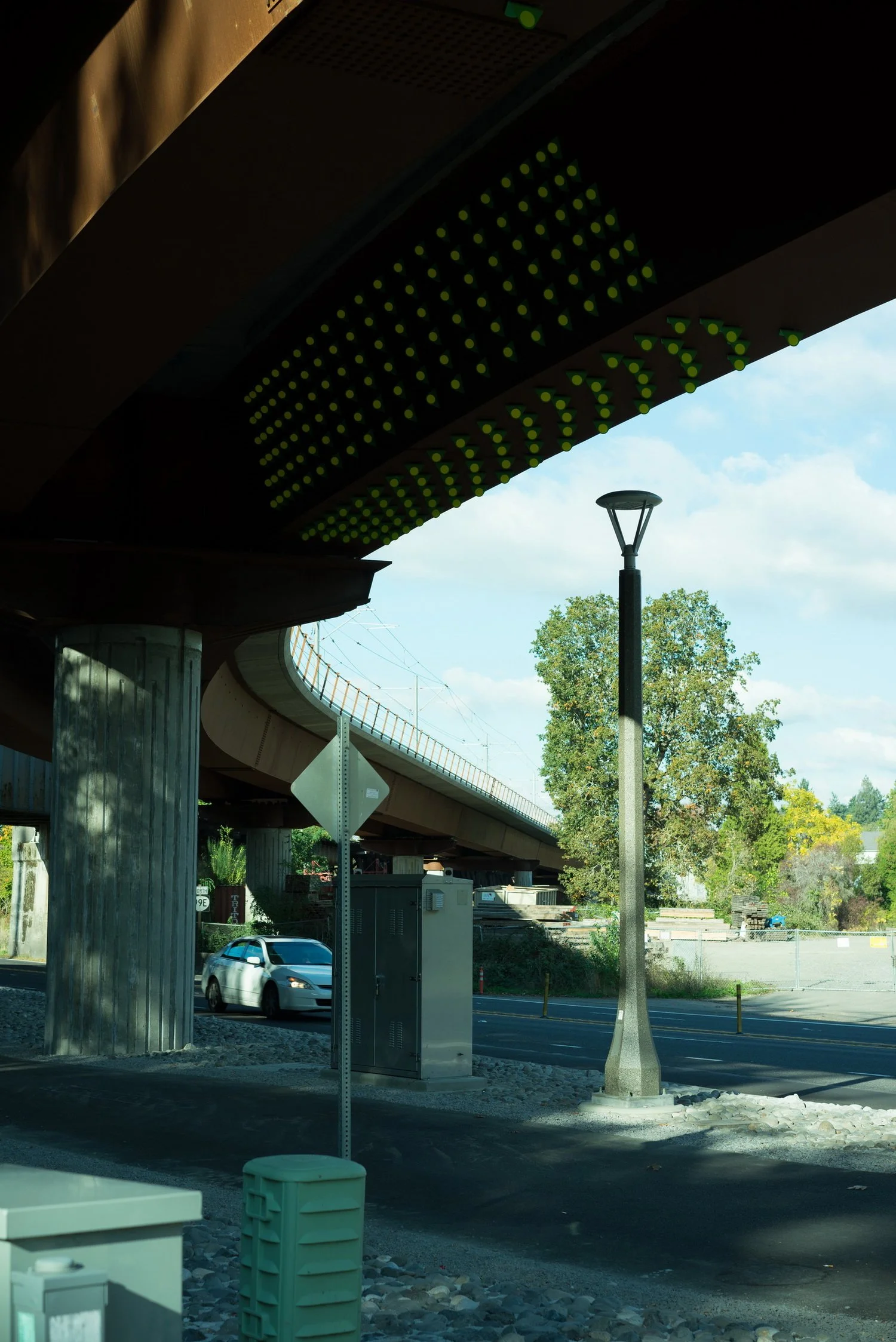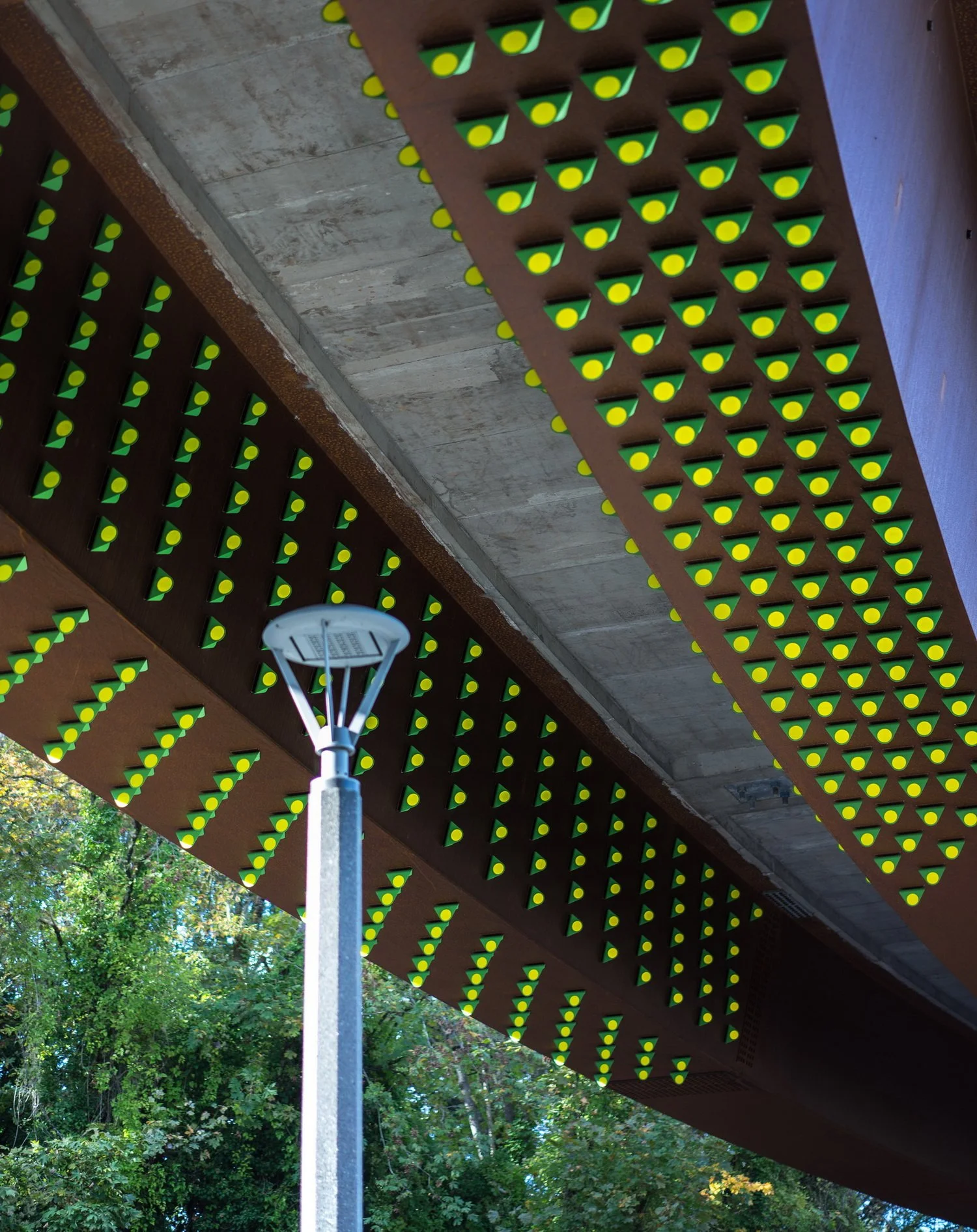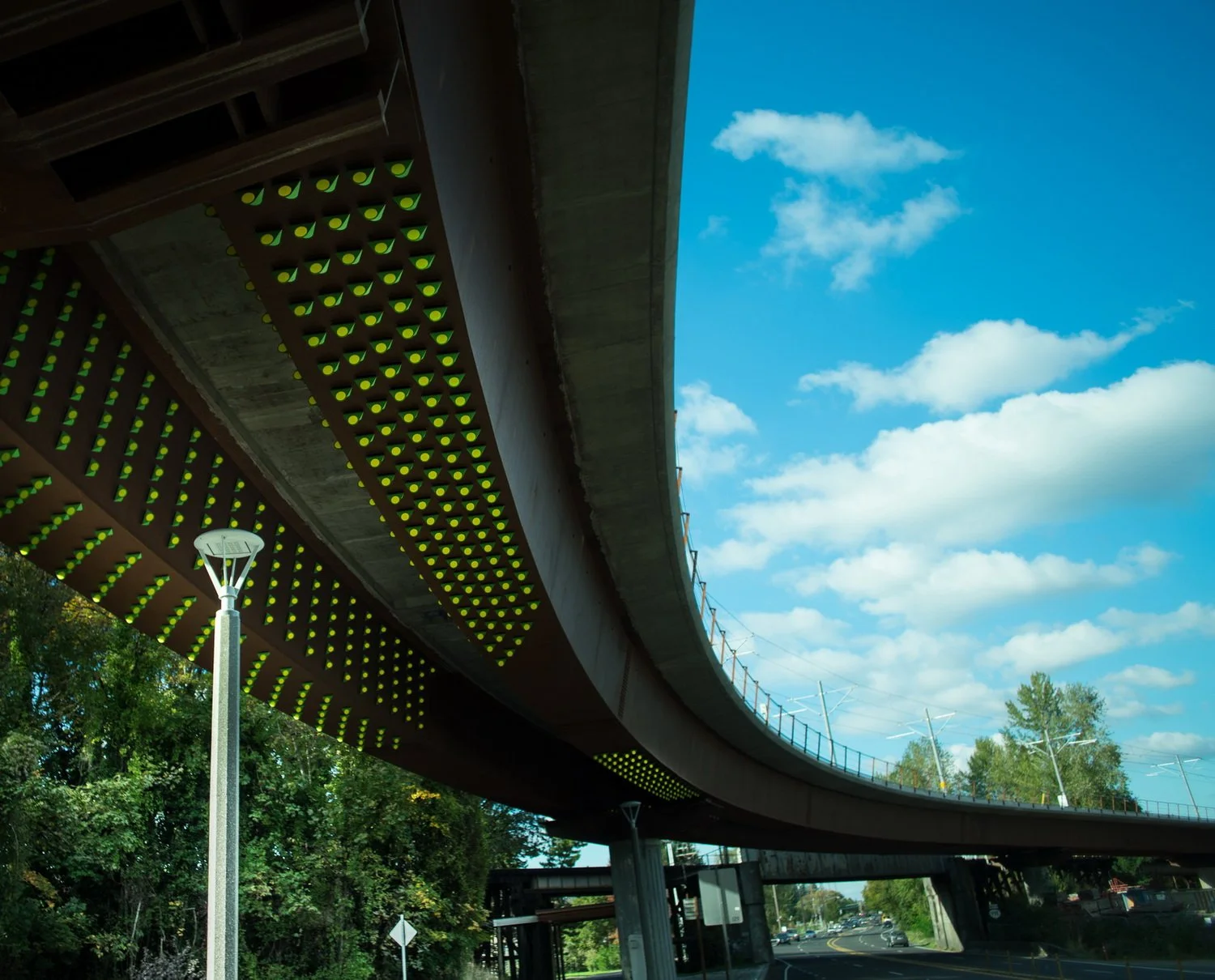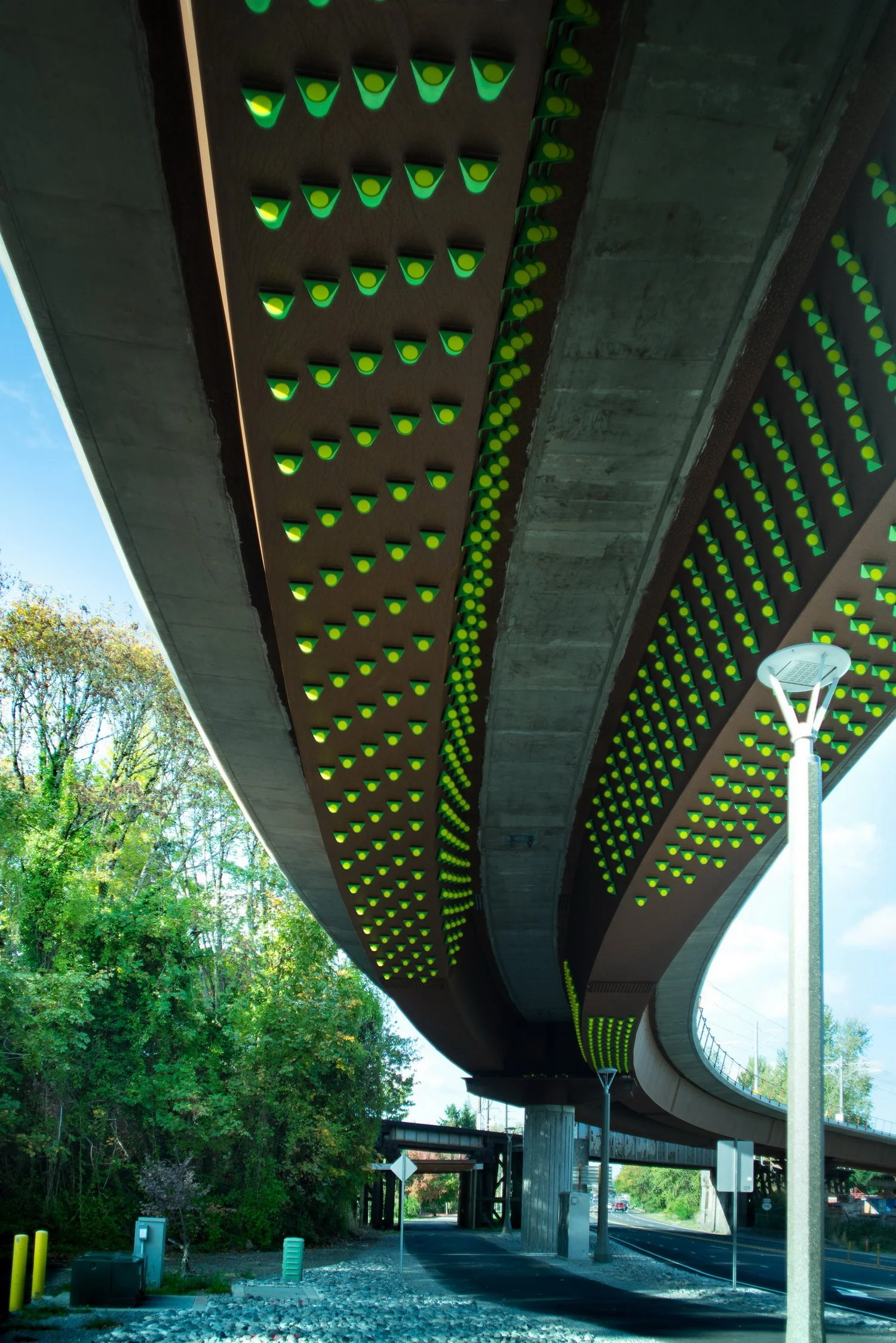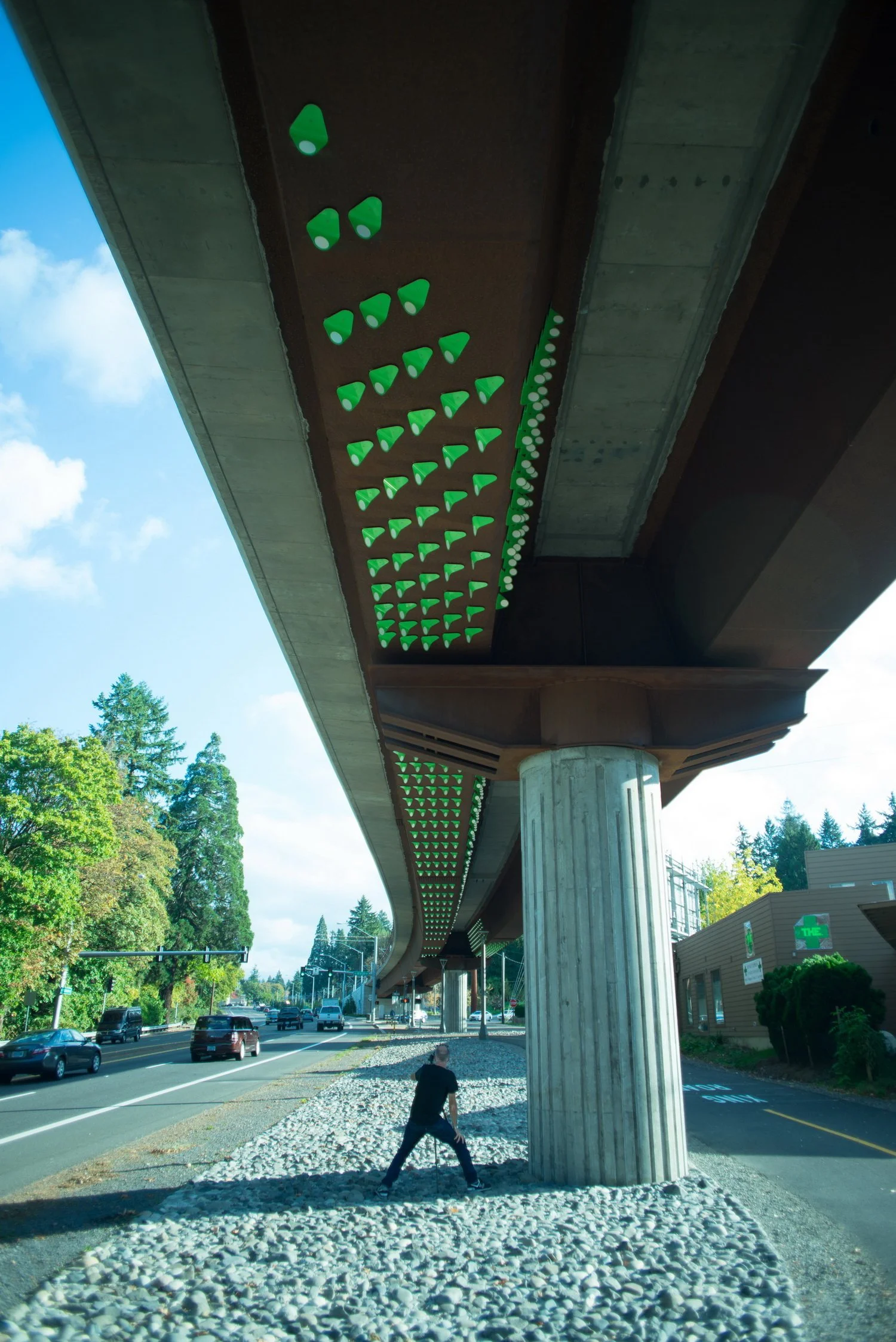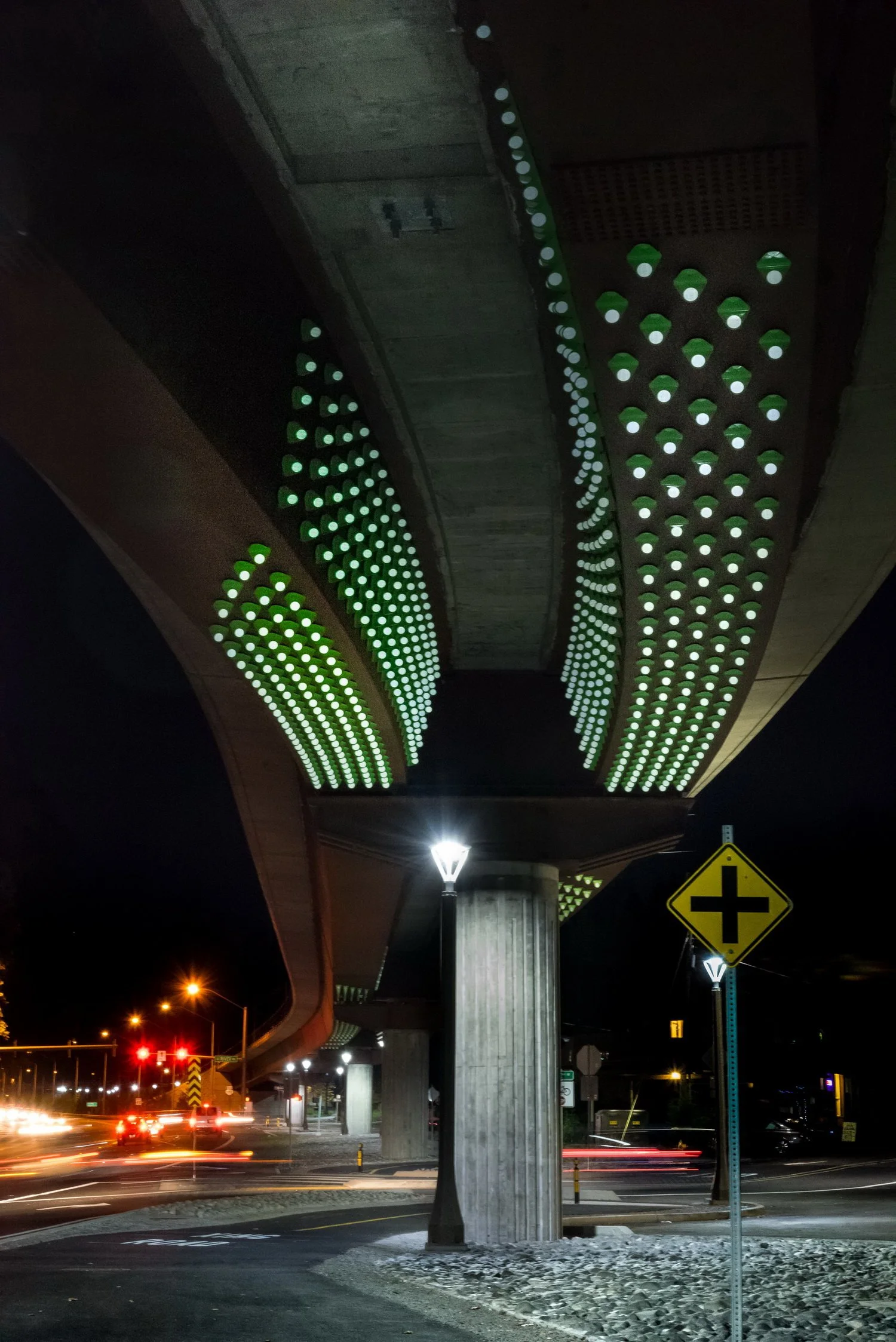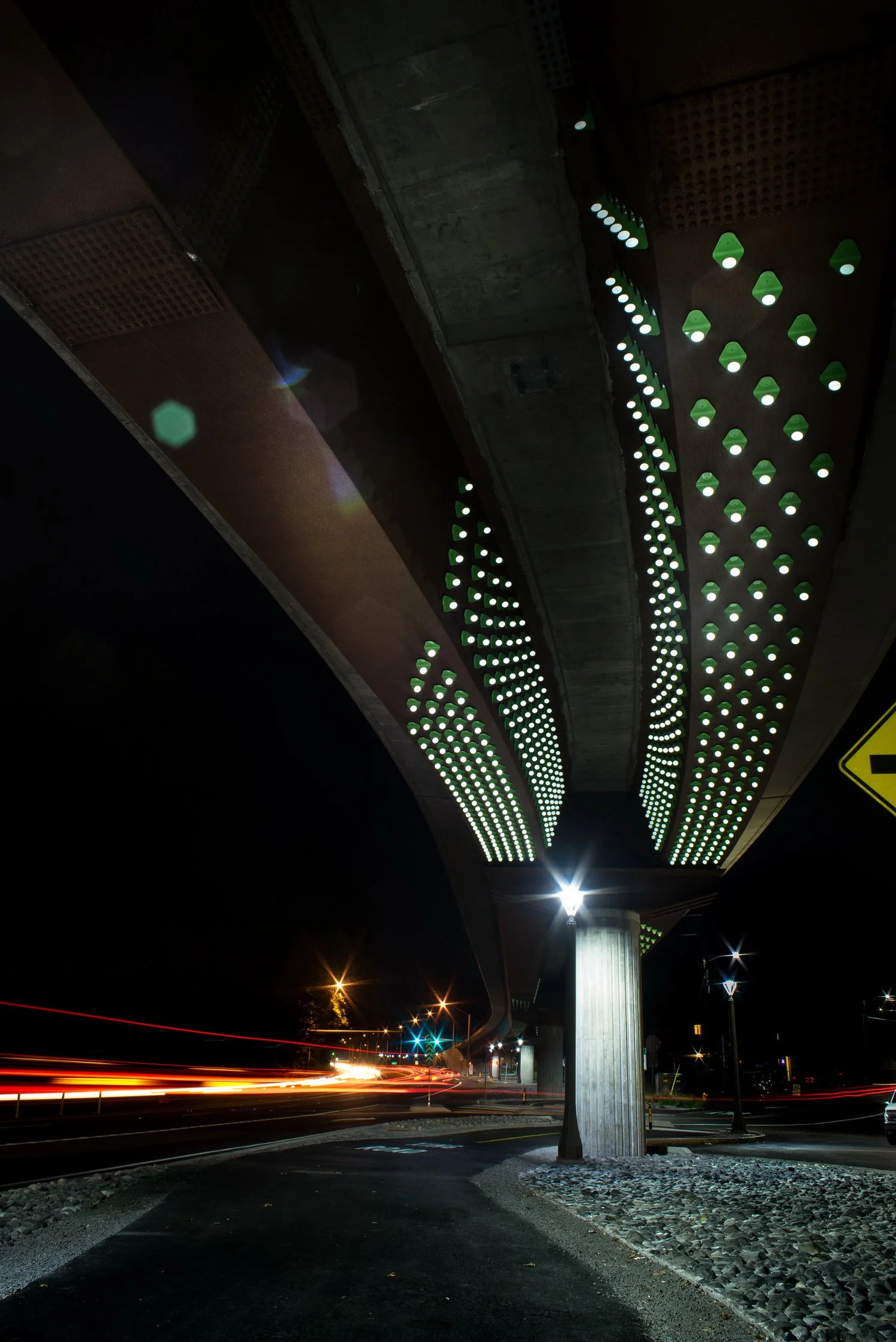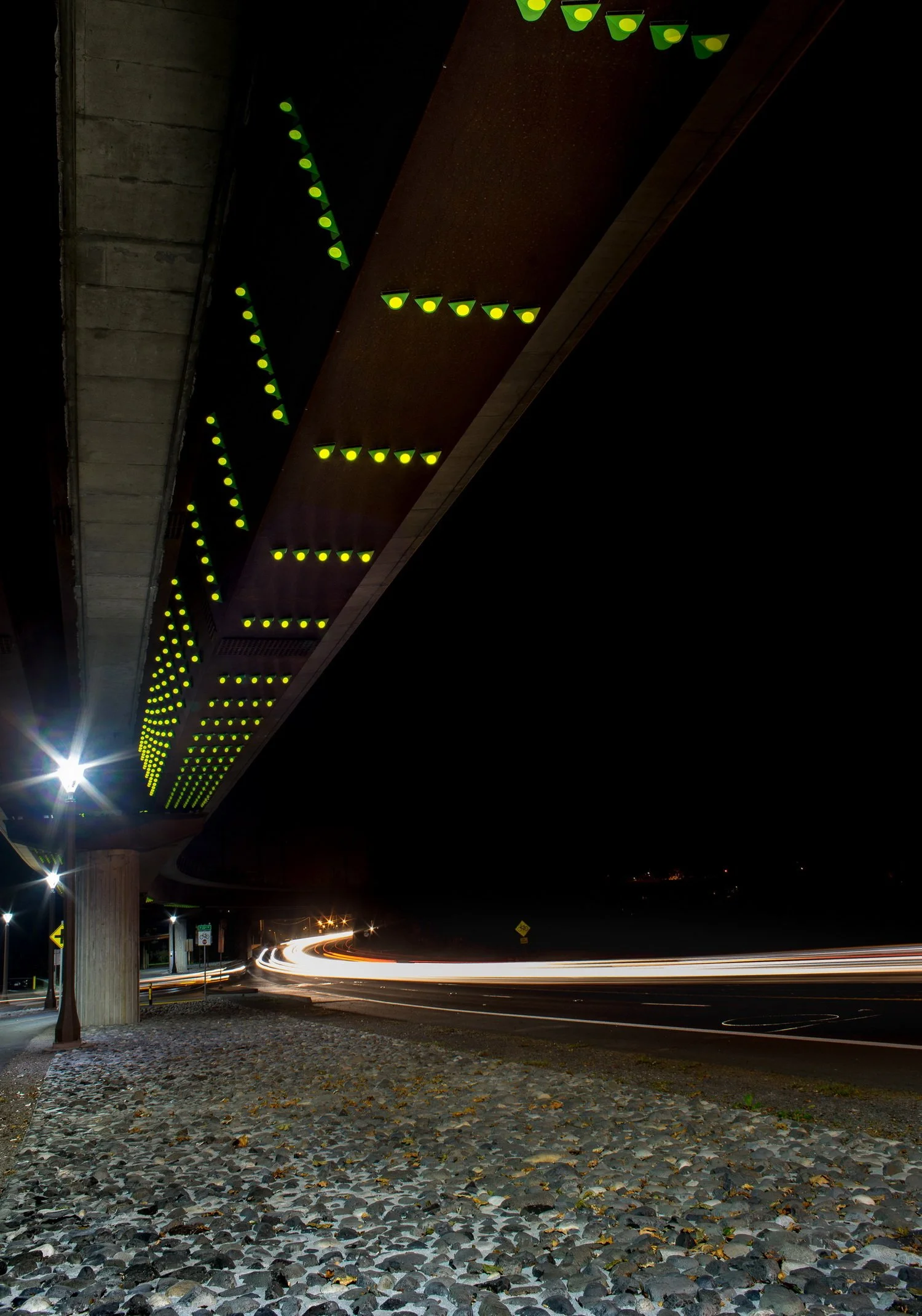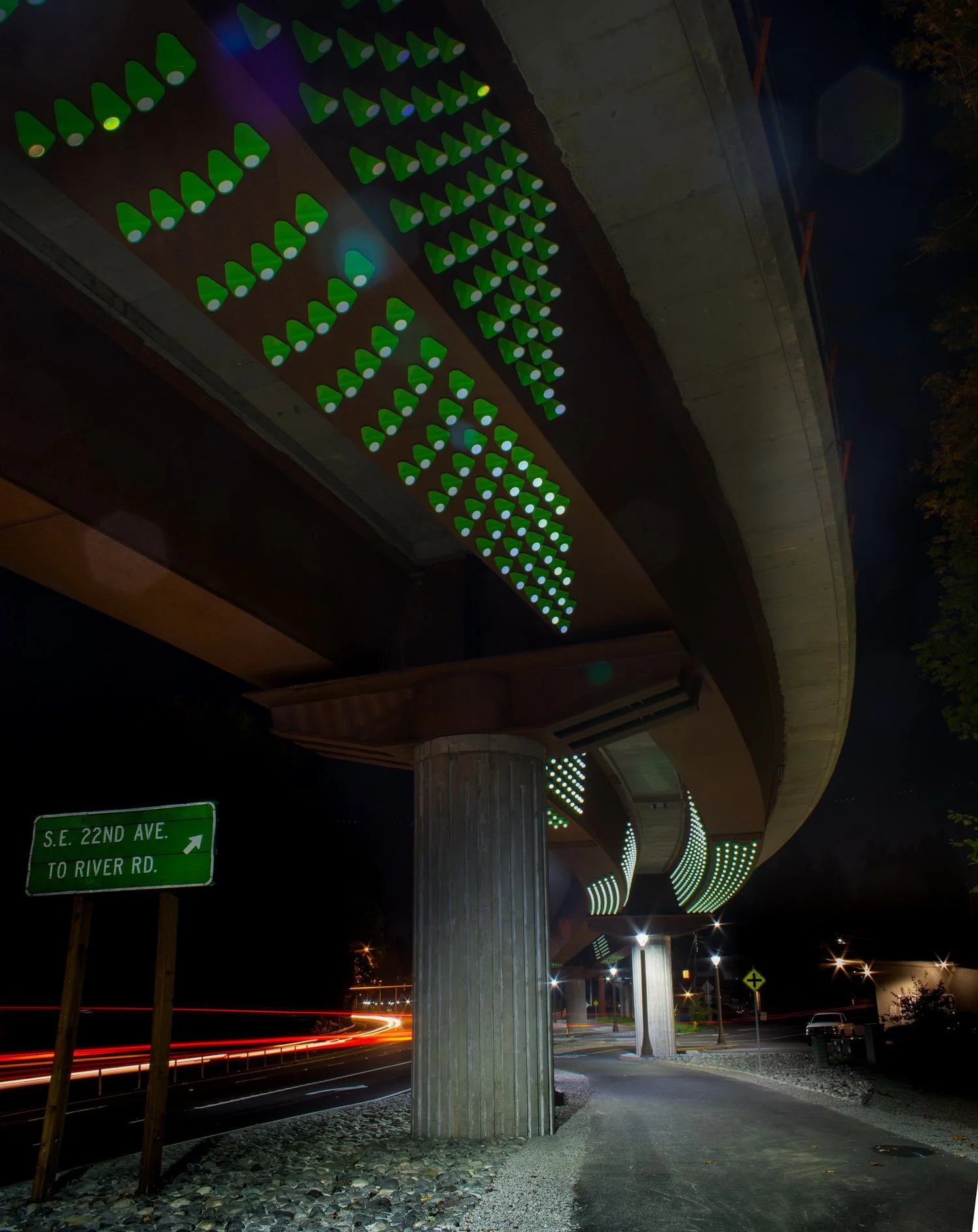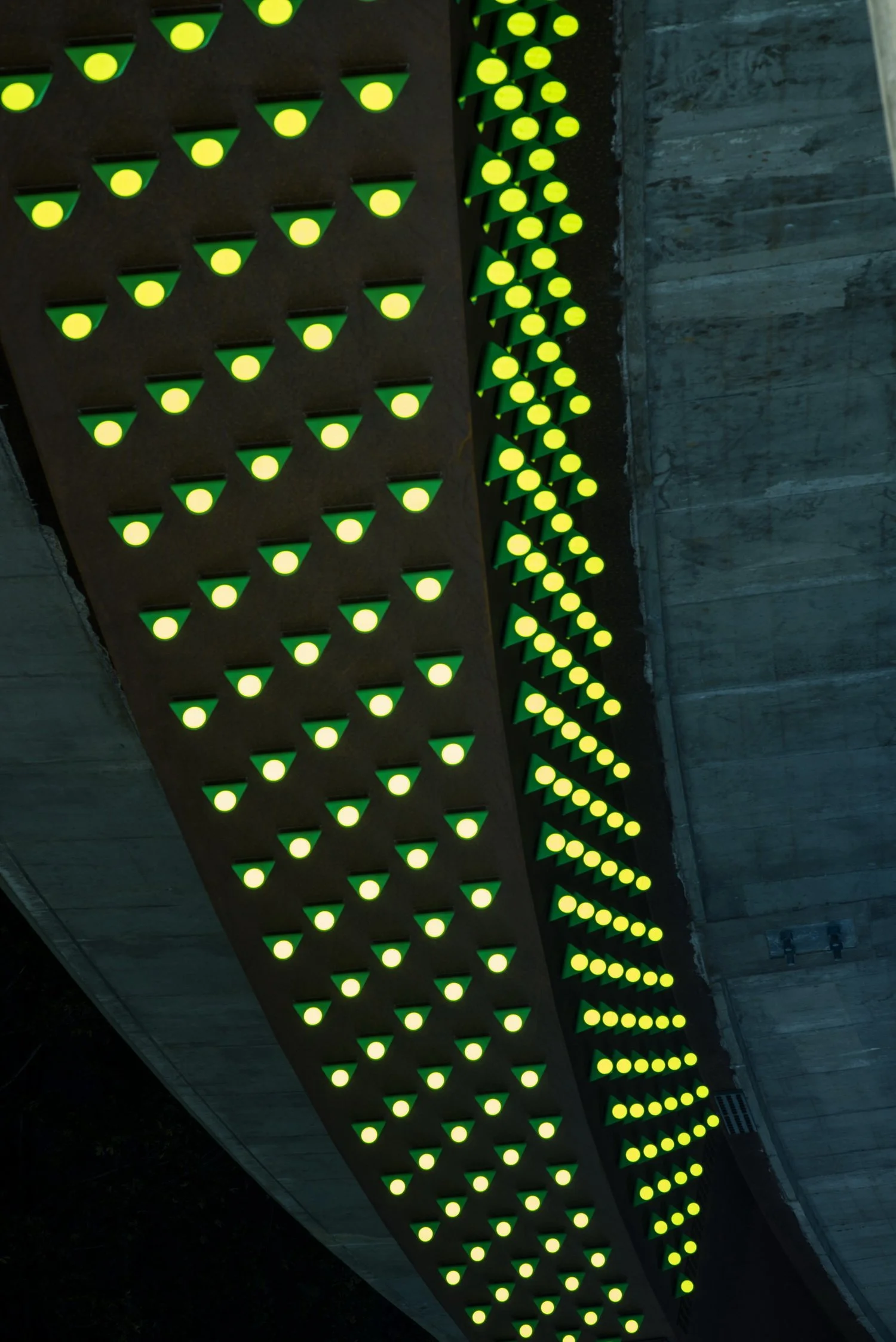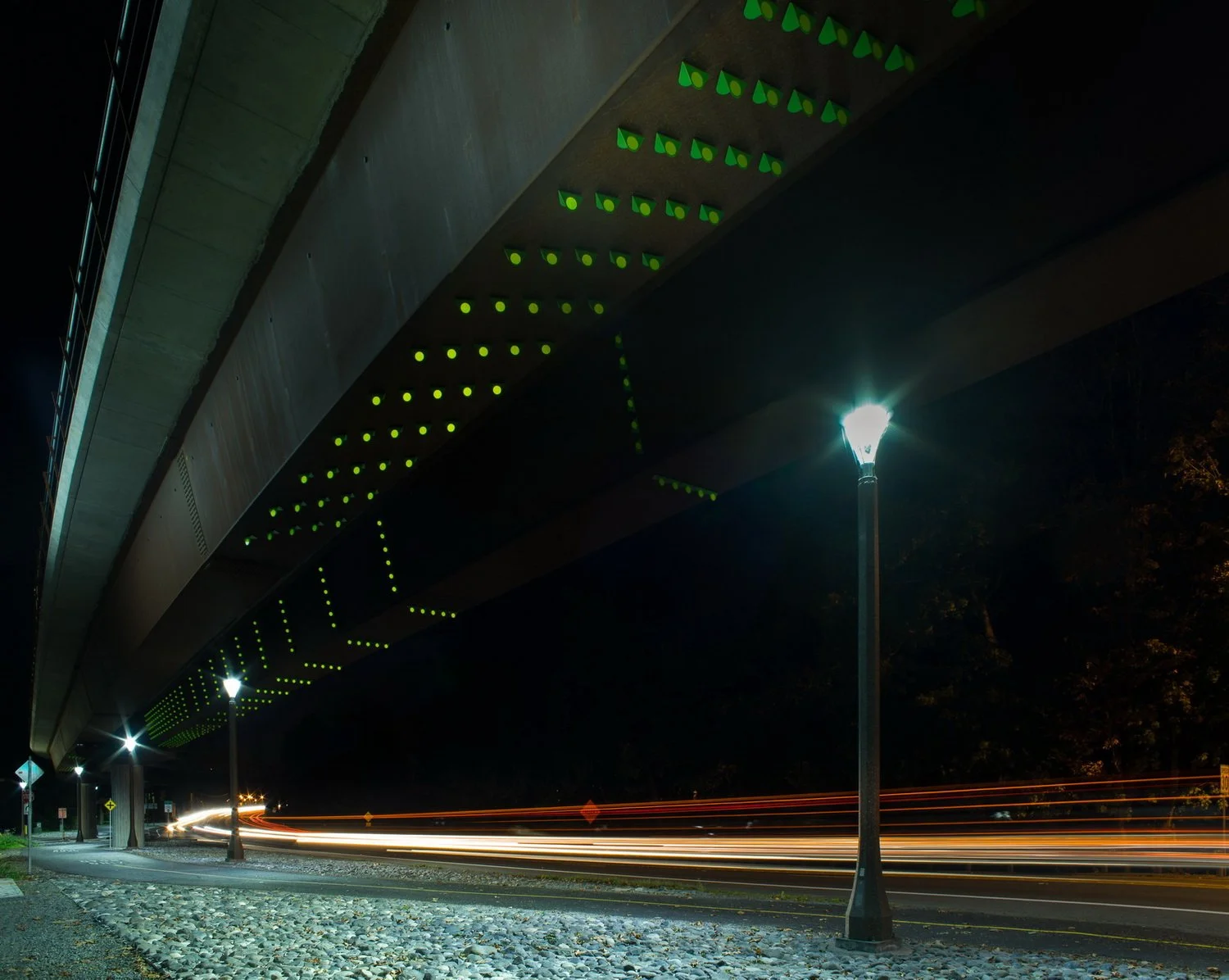flow-zone
(TriMet Public Art Commission, MAX Orange Line — Milwaukie, Oregon)
Design collaboration with Faulders Studio
A bridge’s underside becomes a field of flow.
Flow-Zone transforms the hidden plane of a transit overpass—normally a void between structure and ground—into a kinetic surface that maps the city’s unseen currents. The piece reorients the bridge from load-bearing to light-bearing, aligning its pattern not with its beams, but with the motion that passes beneath.
Nearly two thousand bright-green aluminum fins—“botts”—are embedded across the weathered Corten underside of the 1,700-foot MAX Orange Line overpass. Each one is uniquely indexed and tilted, refusing the bridge’s orthogonal logic in favor of localized vectors: the shifting paths of cyclists, cars, and wind along McLoughlin Boulevard and the Trolley Trail. From some viewpoints, the field condenses; from others, it dissolves—echoing the way flocks or clouds contract and disperse in motion.
Fabrication followed the same principle of alignment through variation. Each bott was fabricated, color-coded, and installed at a precise angle to catch and redirect light. At night, reflectors in their tips register the passing beams of headlights, turning everyday traffic into the work’s illumination source. The bridge becomes a sensor—reading and replaying the city’s movement as flickering waves of green and gold.
By day, the surface shimmers subtly against the rusted steel; by night, it comes alive in motion that never repeats. What was once a dark infrastructural void becomes an optic corridor—part weather pattern, part urban choreography—where flow, structure, and light move as one.
Credits:
Design collaboration — Thom Faulders (Faulders Studio) with Andre Caradec (S/U/M)
Project team — Andrei Hakhovich, Jessica Lisagor, Will Meeker, Jessica Ayran, Adika Djojosugito, Hanting Jin, Pearl Kim, Andrea Tse
Client — Tri-County Metropolitan Transportation District of Oregon (TriMet)
General contractor & installation — Stacy and Witbeck / TriMet

